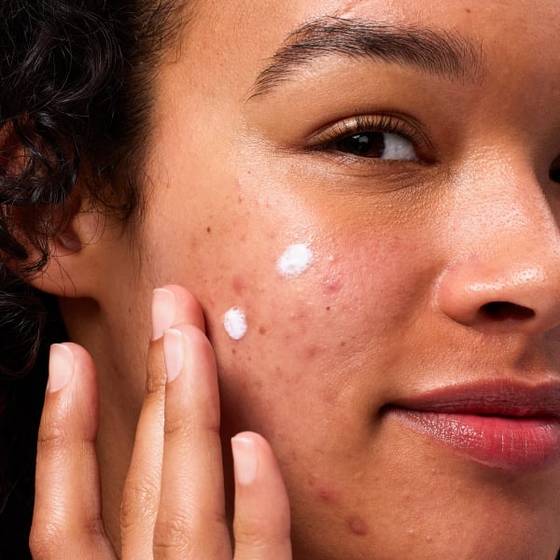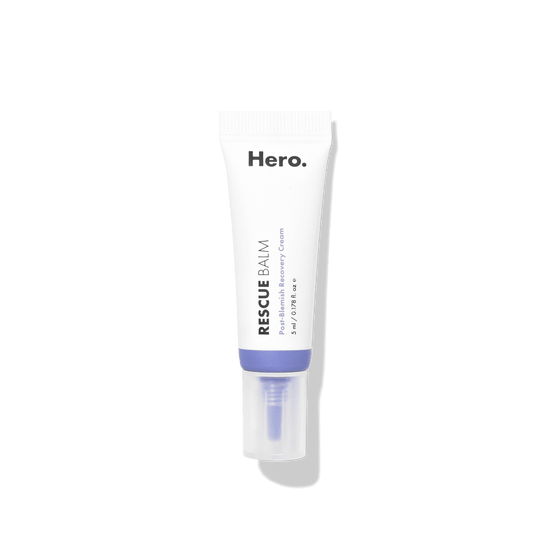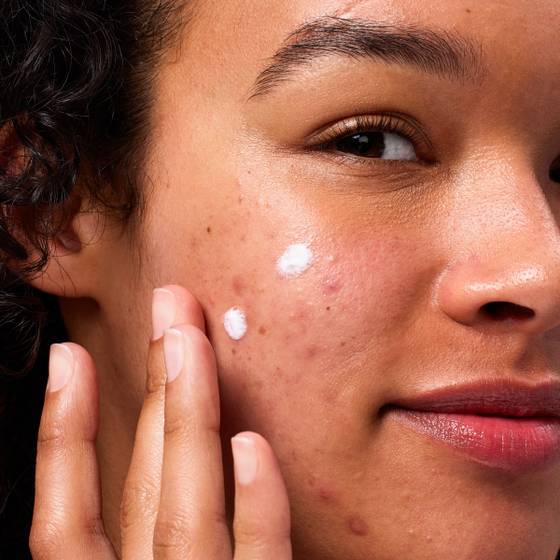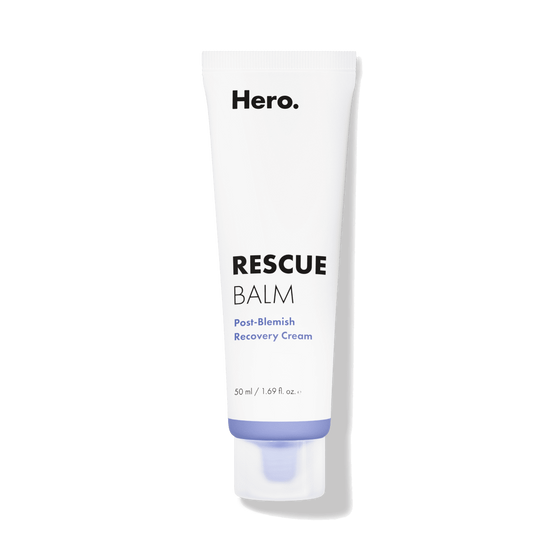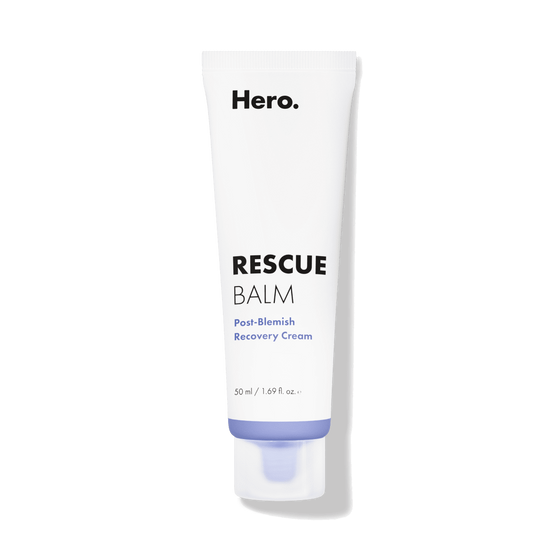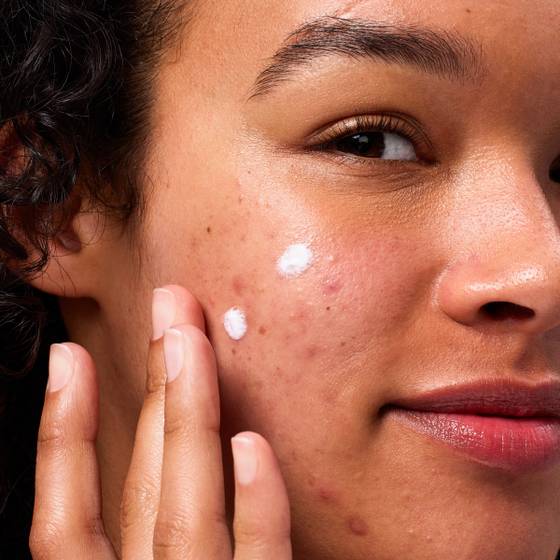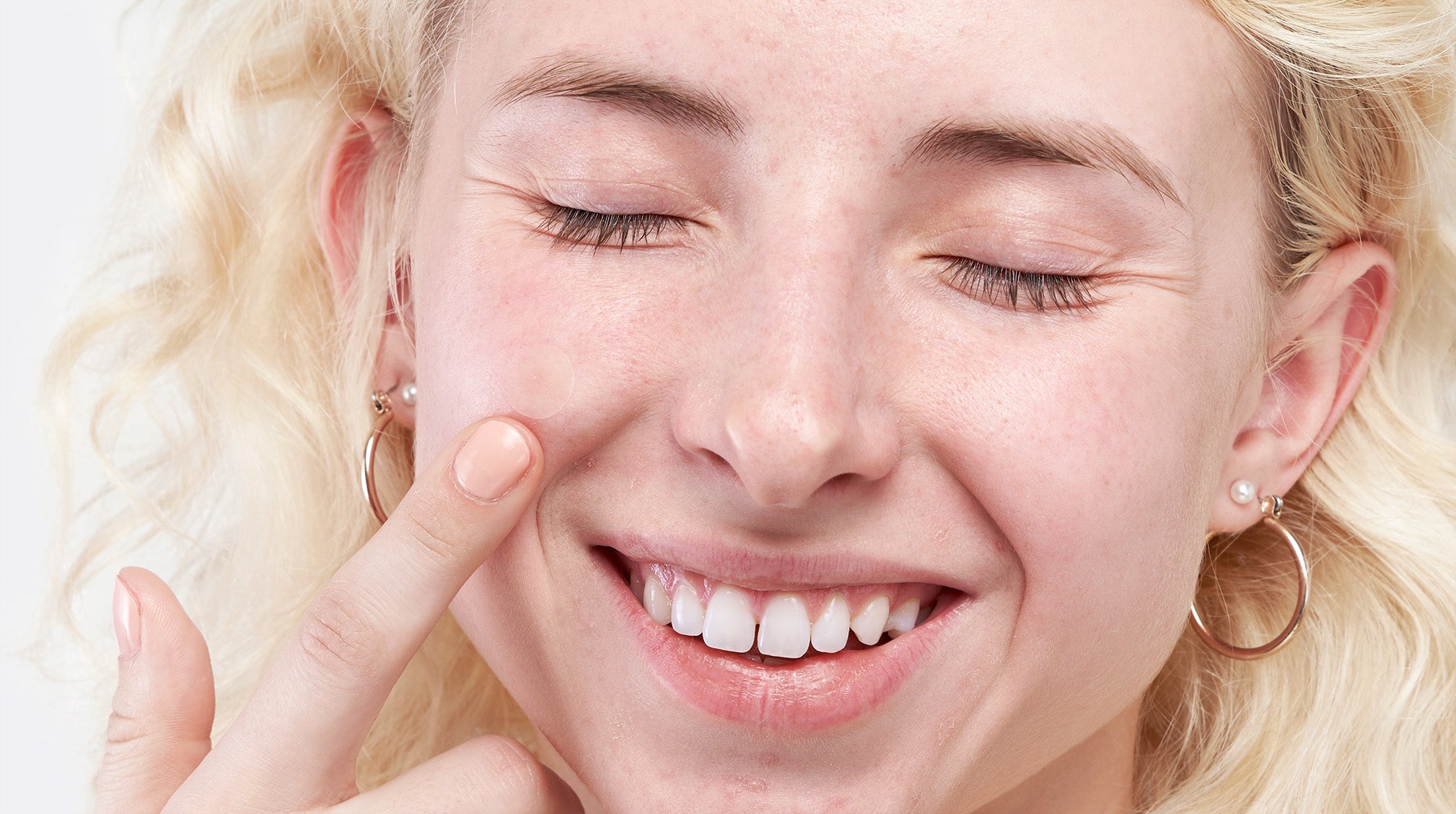
Adult breakouts are normal. Most of us experience pimples long after our high school years, some of us more often than others. In fact, it was adult acne that inspired our co-founder and CEO Ju to launch Hero Cosmetics in the first place.
But sometimes, the skin redness and pimples that adults experience across their cheeks, nose, and chin are not your run-of-the-mill breakouts (AKA acne vulgaris). According to the National Rosacea Society (NRS), 16 million Americans and approximately 415 million people worldwide suffer from rosacea. The surprising part? As many as 95% of rosacea patients are unaware they even have rosacea until it is diagnosed by a physician. Could your “acne” actually be rosacea? We asked dermatologists to break down the difference between the two conditions and explain the triggers and treatments for rosacea.
What is acne?
Acne vulgaris (simply referred to as acne by most people) is a common skin condition that develops from a buildup of sebum, dead skin cells and P. acnes, which are naturally occuring bacteria that live at the base of hair follicles. This pore-clogging combo can be triggered and/or exacerbated by genetics, hormonal activity and bacterial growth, among other causes.
Open or closed comedones are visibly clogged pores without significant inflammation, and they are also a sign that what you are dealing with is absolutely acne. An open comedone is basically a blackhead, or a pore filled with a small black dot. In a closed comedone, you can see white pus in the middle covered by a thin layer of skin.
RELATED READ: Open, Closed, WTH Are Comedones?
What about rosacea?
If you’re seeing acne that does not involve open or closed comedones, there’s a chance it could actually be rosacea (or acne rosacea). Most people with rosacea experience a flushed look to their skin – it can almost look like a sunburn, a rash on the face, or a serious blush.
“Rosacea is often mistakenly referred to as adult acne, however rosacea is different from acne,” says from Dr. Todd E. Schlesinger, a South Carolina-based, board-certified dermatologist and president of the S.C. Medical Association. “It’s characterized by the signature red or ‘ruddy’ look on the cheeks, central forehead or nose, whereas in acne, one will often see whiteheads and blackheads. Rosacea is an inflammatory condition, usually presenting as widened blood vessels and characteristic red bumps.”
Bumps under the skin, such as papules, pustules, nodules or cysts, can make it more difficult to tell if you have acne or rosacea because they are common in both conditions. Papulopustular rosacea (AKA acne rosacea) presents with the same inflamed red bumps and pustules that you see in cystic or inflammatory acne. In these cases, “the triggers for rosacea vs. acne can also be important in distinguishing the two,” explains Dr. Bradley Glodny, a New York-based, board-certified dermatologist and instructor in clinical dermatology at Columbia University. “Rosacea is often triggered by physical or environmental factors, such as stress, sun exposure, caffeine, hot beverages, alcohol/red wine, spicy foods and citrus. Acne is often more multifactorial and it’s more difficult to pinpoint a specific trigger.”
Do I really have to figure out whether I have acne or rosacea?
Well, yes. Acne and rosacea treatments vary greatly and ingredients that are often recommended for acne – such as glycolic acid, lactic acid, benzoyl peroxide and salicylic acid – can actually irritate and worsen rosacea. And if left untreated, rosacea can lead to permanent damage, Schlesinger explains. “In long standing cases, the skin can thicken and become a condition known as rhinophyma, sometimes referred to as the ‘W.C. Fields nose’.” Rhinophyma leaves your nose bulbous, enlarged and red, often with thick bumps on the lower half.
If you suspect you may have rosacea, Glodny recommends visiting a dermatologist or your physician, who will be able to make an official diagnosis based on your history, a physical exam and response to treatments.
Rosacea relief: treatments and self care
According to Glodny, the best treatment for any condition involves prevention and rosacea is a prime example of that. “Identifying and avoiding triggers is paramount. Once lifestyle modifications are made, treatments for rosacea include topical anti-inflammatory medications (ivermectin, sulfas), topical meds to treat flushing (RHOFADE® cream), oral antibiotics (doxycycline at a low dose), and laser procedures (IPL or Vbeam) to treat redness and blood vessels.
To help minimize your flare ups, you’ll want to follow a rosacea diet and avoid red wine, champagne, caffeine, spicy food, hot beverages, cheese, chocolate, citrus fruits and soy sauce. Instead, try to increase your intake of bland fresh vegetables (yes, it sounds boring but you want to keep that inflammation to a minimum), lean protein, probiotics, and grains such as oats, sprouted wheat bread, granola, amaranth, white rice and tapioca. The NRS recommends that anyone suffering from rosacea should keep a diet and lifestyle diary to track, identify and avoid triggers.
Sunscreen is also a must (although it really is a must for everyone, every day), because the sun creates a reaction in your blood vessels that can cause inflammation and weaken the skin barrier. As we mentioned, you do not want to use ingredients designed for oily skin or to combat acne. Gentle, moisturizing and minimal (the fewer ingredients, the better) is the way to go. Look for short ingredient lists that include: niacinamide, argan oil, shea butter, chamomile, beta-glucans, panthenol or oligopeptides.
While these recommendations are a great start to calming your rosacea, we recommend you speak to your dermatologist for the most accurate diagnosis and a treatment plan that will work best for you.
If you’re wondering if Rescue Balm can help with your rosacea symptoms, the answer is yes. While it was created to soothe post-pimple skin, the same redness-minimizing panthenol, skin-smoothing oligopeptides and skin-softening shea butter can help to hydrate and minimize the flush without irritating your skin.
Infographic from AAD:

[[product-ad]]












.png?v=1663017252122)


